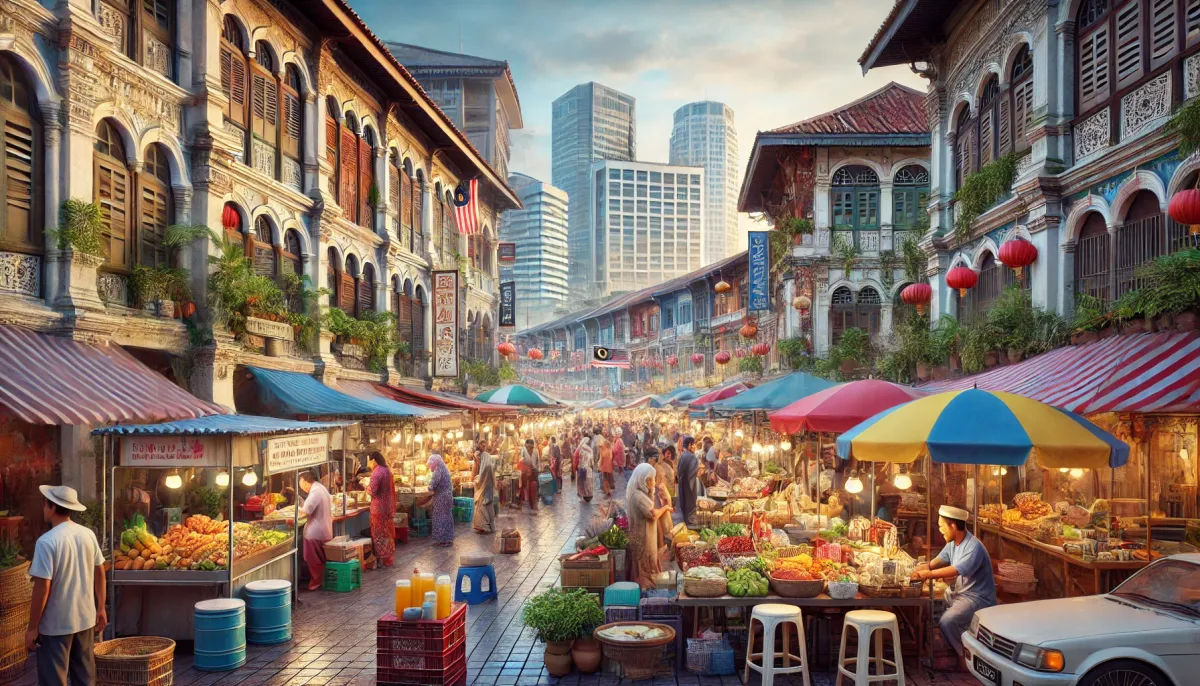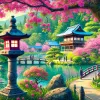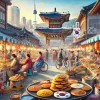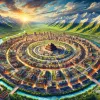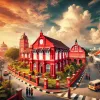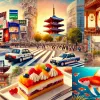Hi everyone, Mark here! As a seasoned backpacker with a particular fondness for Asia, I've spent countless hours exploring its vibrant cities and hidden gems. This time, I'm sharing my unforgettable journey through Malaysia, a country that seamlessly blends ancient history with modern dynamism. Get ready for a whirlwind tour!
Melaka: A Journey Through Time
My Malaysian adventure began in Melaka (Malacca), a UNESCO World Heritage city and one of the oldest in the country. It's a place where East meets West, a melting pot of cultures and a treasure trove of history. I was immediately captivated by the Dutch Square, with its iconic red buildings – a poignant reminder of Malaysia's colonial past. The sheer volume of tourists is astounding; I learned from the local tourism board that Melaka receives approximately 17 million visitors annually, each staying an average of three days.
The city's historical significance is undeniable. Situated at the crucial crossroads of the Melaka Strait, it served as a vital trading port since ancient times, connecting China, India, the Malay Archipelago, Thailand, and even further afield. This strategic location fostered a rich multicultural environment, laying the foundation for Malaysia's diverse society today. Melaka's history is deeply intertwined with the Melaka Sultanate, an independent kingdom that rose to prominence in the 13th century. Legend has it that the kingdom was founded after a prince, Parameswara, was deeply impressed by a deer that outsmarted his hunting dogs. To this day, the state emblem features a deer – a charming reminder of the city’s whimsical origins.
Here’s a quick snapshot of Melaka’s impact:
| Statistic | Figure |
|---|---|
| Annual Tourist Visits | ~17 Million |
| Average Stay | 3 Days |
| Significant Aspect | Historical & Cultural Heritage |
| UNESCO Status | World Heritage Site |
Melaka's Cultural Crossroads: Jonker Street and Peranakan Heritage
My exploration continued to Jonker Street, a vibrant street brimming with antique shops and local delicacies. Thirty years ago, this area served as a bustling chicken market (hence the name "Chicken Street"), but it's now a thriving tourist hub, especially on weekends, showcasing a wealth of traditional Malaysian cuisine. It's a place where you can see the legacy of Chinese migration; even a large lizard— initially mistaken for a crocodile!—lives there.
The area’s history is inextricably linked with the Peranakan culture, a unique blend of Chinese and Malay traditions. This heritage is visible in the architecture, cuisine, and the very language spoken. I learned that the term "Peranakan" refers to descendants of Chinese immigrants who intermarried with local Malays, creating a fascinating cultural tapestry. Melaka, along with Penang, boasts a particularly strong Peranakan presence, and this is partially due to the large influx of Chinese migrants who arrived with Zheng He during the Ming dynasty. While the story of Princess Hang Li Po remains shrouded in mystery, the presence of Ming Dynasty descendants in the region is undeniable, leaving an enduring mark on the community.
Kuala Lumpur: A Modern Metropolis with Historical Echoes
Leaving Melaka, I journeyed to Kuala Lumpur, Malaysia's vibrant capital city. Here, the contrast between ancient and modern is even more striking. The Petronas Twin Towers, once the world's tallest buildings, stand as a symbol of Malaysia's progress. While modern skyscrapers dominate the skyline, hints of the city's history can be found throughout its districts. I even visited the City Gallery, providing a fascinating glimpse into Kuala Lumpur's urban development.
The city's development is a testament to its colonial history, particularly the British influence. I learned how the British, after gaining control of Melaka in 1824, established the Straits Settlements. Their administration greatly influenced the development of cities like Kuala Lumpur, shaping its urban planning, infrastructure, and administrative systems. I was particularly fascinated by the role of Chinese immigrants, initially brought to work in the tin mines and rubber plantations, which contributed significantly to the city's diverse character.
Kuala Lumpur demonstrates the multifaceted impact of colonization:
| Colonial Power | Impact on Kuala Lumpur |
|---|---|
| British | Urban planning, infrastructure development, administrative systems |
| Portuguese | Initial establishment of trade routes and settlements |
| Dutch | Influence on some buildings and architecture |
Kuala Lumpur's Cultural Mosaic: From Royal Palaces to Street Food Havens
Kuala Lumpur's multiculturalism is palpable. I witnessed the juxtaposition of modern skyscrapers with traditional Malay architecture, representing the complex interplay between the old and the new. The Royal Palace, for instance, embodies the power of the Sultans, while the pervasive use of the title "Dato'" reflects the honorific system in the country.
My visit to Jalan Alor night market was a culinary adventure; I sampled a plethora of international cuisines. The sheer diversity of food and people was astounding, a true microcosm of the city's international character. The blend of Malay, Chinese, and Indian influences in the cuisine is a testament to Malaysia's rich cultural heritage. I also spent time at Genting Highlands, a hill resort with a casino, a testament to Malaysia's willingness to incorporate modern leisure activities.
The Malaysian Spirit: A Blend of Cultures and Contrasts
My journey through Malaysia was a revelation. It’s a country that manages to retain its historical roots even as it embraces modernity. The people are friendly and welcoming, reflecting the nation's vibrant mix of cultures. From the ancient streets of Melaka to the soaring skyscrapers of Kuala Lumpur, Malaysia offers an unforgettable experience for any traveler. I highly recommend it to anyone seeking a unique blend of history, culture, and modern life within Asia.
